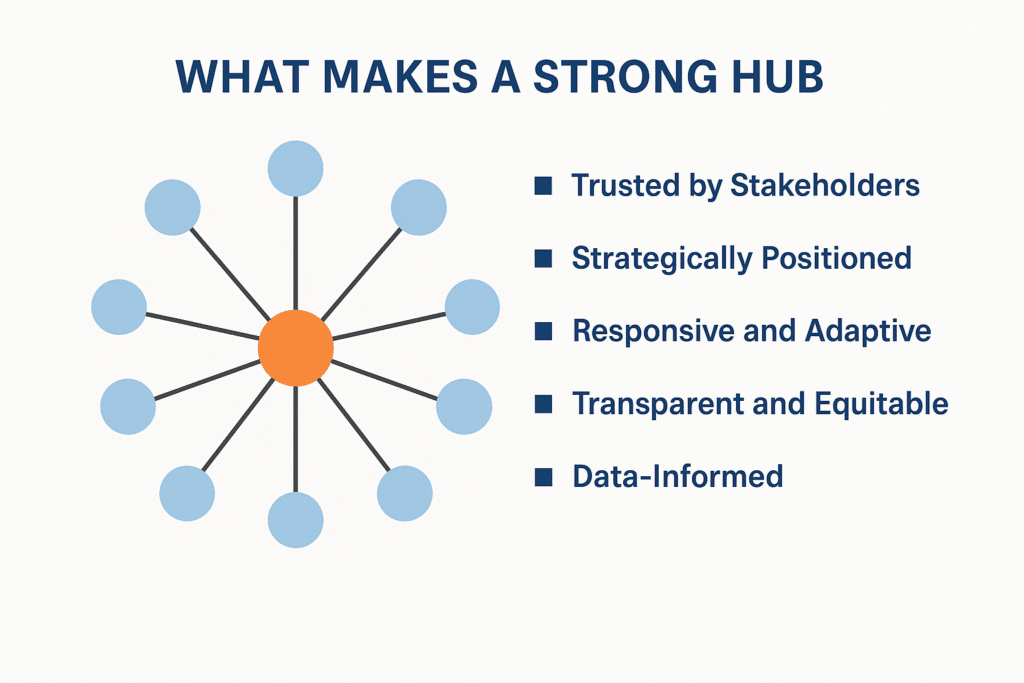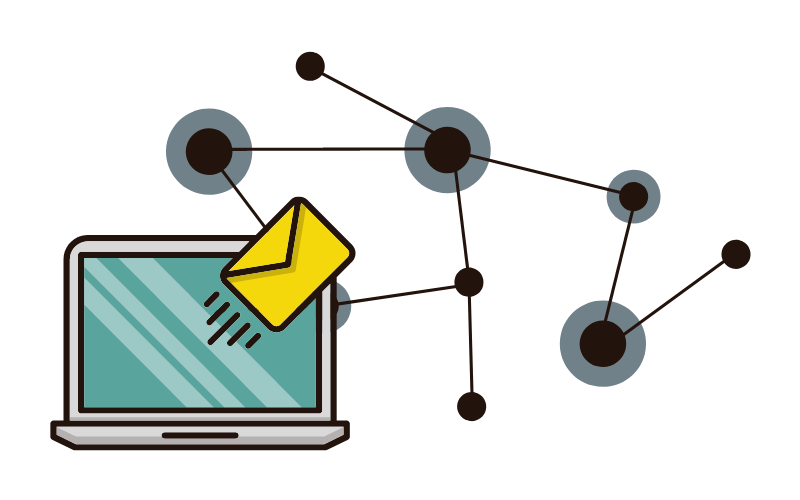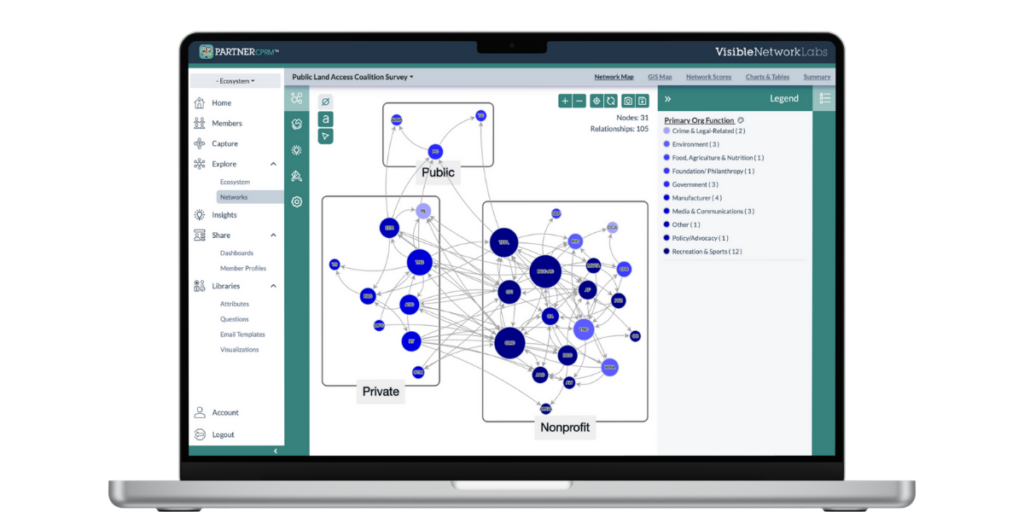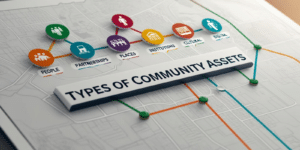In complex systems like public health, early childhood, and behavioral health, coordination is everything—but it’s hard. More and more communities are turning to hubs as central connectors to align stakeholders, share resources, and drive systems change. However, without a clear picture of the network, hubs often become bottlenecks instead of bridges.
At Visible Network Labs (VNL), we use network science to design hubs that build trust, increase equity, and improve collaboration. Here’s how we do it—and how you can too.
What Is a Hub in a System Context?
A hub is a central actor or organization intentionally positioned to coordinate collaboration, facilitate resource sharing, and build relationships across a network. Depending on the context, hubs may be known as:
Backbone organizations (Collective Impact)
Anchor institutions
Intermediaries
Resource or referral centers
Coordinating councils or steering committees
The core idea is the same: support a decentralized system by providing a central node that improves communication, visibility, and alignment.

The Problem: Invisible Networks
Many systems suffer from the same challenge: stakeholders don’t know who is doing what, where collaboration is (or isn’t) happening, or whether their hub is working. Without visibility, it’s easy for hubs to duplicate efforts, miss gaps, or become overwhelmed.
This is where network science offers powerful tools.
How Network Science Helps Build Better Hubs
Network science is the study of how relationships influence behavior, resource flow, and performance. When applied to community systems, it provides a rigorous, data-driven approach to understanding collaboration dynamics and making strategic decisions.
Map Relationships: Identify how people and organizations are connected—formally and informally—with social network analysis. Visualizing the network uncovers who is collaborating, who is isolated, and how communication flows.
Diagnose Silos and Gaps: By identifying clusters, disconnected nodes, or uneven collaboration patterns, network analysis reveals where partnerships need to be built or strengthened.
Find Key Players: Metrics like degree, betweenness, and closeness centrality—as well as trust and perceived value—highlight individuals or organizations best suited to serve as hubs, brokers, or bridges across the network.
Monitor Performance: Over time, repeated network assessments show how a hub’s position and influence shift, allowing leaders to measure engagement, trust, and progress toward collaboration goals.
Using platforms like our PARTNER CPRM, communities can collect, visualize, and act on this data in real time. The platform supports everything from network surveys to interactive dashboards, making it easier for hub leaders to align strategy with evidence.

Key Features of High-Performing Hubs
Not all networks and hubs are the same in terms of effectiveness, and it’s not just a matter of luck and chance. From our work with hundreds of networks and community across the country, we’ve identified common characteristics of effective hubs. These five stand out:
Trusted by Stakeholders: Trust and perceived value matter more than size or power.
Strategically Positioned: The best hubs bridge silos, not sit at the top.
Responsive and Adaptive: They evolve based on data and feedback.
Transparent and Equitable: They actively work to center marginalized voices.
Data-Informed: They monitor relationships and adapt strategy using real network data.
Best Practices for Building Strong Hubs
Here are some actionable best practices for building new hubs or strengthening existing ones in your community to improve outcomes and resiliency:
Start with Network Mapping: Before forming or funding a hub, understand the current network. Who is connected? Who isn’t?
Use Trust & Value Metrics: Make sure your hub is seen as trustworthy and useful by its peers—this is critical for legitimacy.
Empower the Hub Role with Data: Equip your hub with tools like PARTNER CPRM to monitor their network, facilitate connections, and report outcomes.
Evaluate Over Time: Hubs should not be static. Use longitudinal network data to assess and improve their performance.
Design for Equity: Ensure the hub includes and uplifts underrepresented partners. Use network data to identify who’s left out.
Case Study: Help Me Grow National Center
One real-world example of an effective hub strategy is the Help Me Grow National Center (HMG). Operating across dozens of states, HMG serves as both a national coordinating hub and a model for local early childhood systems that connect families to developmental and behavioral services.
Each local HMG affiliate acts as a central hub, coordinating healthcare providers, early educators, family support services, and public agencies. By serving as a single point of contact and referral, the local hubs streamline resource access and improve developmental outcomes for children.
Using network science and data tools like PARTNER CPRM, several HMG affiliates have been able to:
Map and assess their local systems of care
Identify gaps in service delivery and referrals
Build stronger relationships across sectors
Monitor how well their coordination hubs are functioning over time
HMG exemplifies how structured, intentional hub strategies—grounded in data—can drive more equitable and effective outcomes at scale.
Read more at https://helpmegrownational.org/hmg-system-model/

Get our monthly newsletter with resources for cross-sector collaboration, VNL recommended reading, and upcoming opportunities for engaged in the “network way of working.”
4 Common Hub-Building Pitfalls to Avoid
Good news: We are not starting from scratch. We have a lot of lessons learned from existing hub strategies across the country. Here are some common mistakes in this space and our advice for avoiding them:
Appointing hubs based on politics or convenience rather than network position: Selecting a hub because of its visibility or influence—rather than its actual connectivity and trust within the network—can backfire. A hub must be embedded in the system and recognized by its peers as a connector, not just a leader.
Over-centralizing control (hubs aren’t hierarchies): A hub should not act as a gatekeeper or decision-maker for the network. True hubs distribute power, amplify voices, and enable collaboration rather than direct it from the top-down.
Failing to evaluate hub impact or adapt strategy: Without ongoing measurement of how the hub is functioning—especially in terms of trust, reach, and equity—it’s impossible to know if it is helping or hindering system performance. Regular network analysis ensures hubs remain effective.
Ignoring trust dynamics among partners: Even a highly connected hub can fail if it’s not trusted. Trust and perceived value are core to a hub’s ability to influence and support the network. Ignoring these dynamics risks undermining collaboration, especially among historically marginalized groups.

How VNL Can Help Your Network
Whether you’re designing a new hub, strengthening an existing one, or seeking to evaluate your impact, you don’t have to do it alone. Our team of network science experts offers:
Network assessments to map your current system dynamics
Training and capacity building for hub organizations and networks
Software tools like PARTNER CPRM to manage and measure collaboration
Custom consulting for building equitable, data-driven coordination strategies and tools
Conclusion: The Future of Hub Strategies Is Network-Driven
In an era of increasing complexity, collaboration is essential—but it doesn’t happen on its own. Hubs can play a powerful role in aligning and amplifying systems for change. With network science, you can ensure your hub isn’t just active, but effective.
Ready to strengthen your system’s hub? Request a demo of PARTNER CPRM or contact us to talk strategy.






